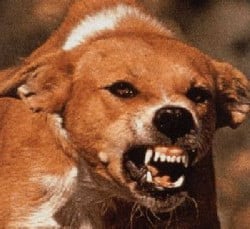What to do when pets fight sounds easy on paper but when it happens, most owners are so anxious plans go awry.
A dog or cat fight must be one of the most frightening things for any pet owner to deal with. Whether it occurs in a doggy park or at your own home, here are some ways you can help to diffuse the situation, and most importantly, prevent it happening in the first place.
Animals, including cats and dogs, usually fight because of behavioural issues such as resource guarding (food, beds, territory) and dominance as well as temperament. Unfortunately, fights and bite wounds can lead to severe injuries and even death.
What to do when pets fight: practical tips
• The best way to prevent dogs from fighting is early puppy socialisation during which a dog is taught not to bite.
• The tug-of-war games you might play at home with a dog only encourages instinctive fighting behaviour so avoid them.
• Sterilising animals can also help to reduce hormonal influences which might lead to fighting. Uncastrated male dogs and cats will roam in search of females on heat and often get into territorial fights with other males. These can lead to nasty wound infections, and in some cases, horrific injuries caused by the other dog or cat owner trying to chase your pet away.
• Do not expose your pet to situations where fights are likely i.e. don’t feed a food-guarding dog alongside a puppy that feeds from any bowl containing food.
• Don’t walk an unsocialised dog off lead in a public area.
What to do when separating fighting pets
What to do when pets fight may seem like common sense but owners may be so anxiety ridden during the fight, common sense goes out of the window. Try to remember the following:
• If you see animals fighting try to separate the fighters without getting bitten yourself (many pet owners trying to separate dogs fighting have been so badly bitten that they have needed emergency medical treatment themselves before the animals can be treated).
• Don’t try separating fighting animals by hitting or hurting them as that might lead them to the fight intensifying. Spraying the fighting animals with a hose pipe sometimes works, as does making loud noises to distract them. As soon as they are no longer fighting, assess the damage to both parties.
• Visible bites, especially punctures, are just the tip of the iceberg and even small breed dogs like Chihuahuas have a bite force of over 100 PSI (larger dogs can have a bite force up to 600 PSI – close to that of a lion) and thus will leave bruises and damage deeper than the obvious punctures and damage.
Treating a bite wound
If wounds are bleeding excessively place pressure on them and get the animals to a vet immediately while phoning ahead so that the vet can prepare for your arrival.
If wounds are very extensive, like large tears or multiple wounds, it is also advised that you seek veterinary help as soon as possible . For less obvious bites and punctures, clip the hair around the wounds and clean with saline (1 tsp of salt in 1 cup of water). If wounds are over the chest, on the abdomen or visibly deep rather take your animal to the vet as flushing wounds might worsen the situation by flushing debris into wounds.
For small punctures with little contamination, clipping the hair and cleaning at home with saline might be sufficient but, again there might be severe damage to underlying tissues and the bacteria in most mouths can cause abscesses if not cleaned sufficiently. The dog or cat might also need pain relief so a visit to your vet is recommended.
What not to do
• Do not apply antiseptic ointments on wounds that are not cleaned properly.
• Some disinfectants can cause more damage or are toxic to pets i.e. peroxide, or using iodine containing disinfectants /ointments in cats.





